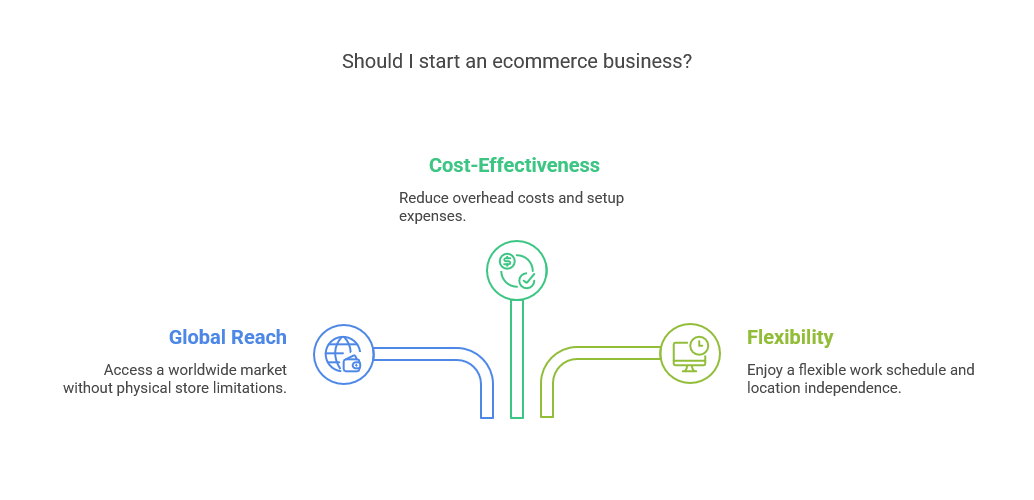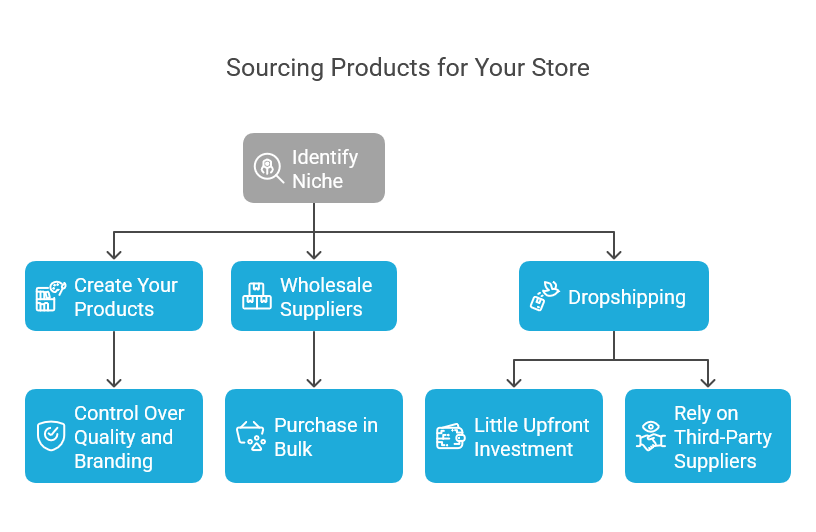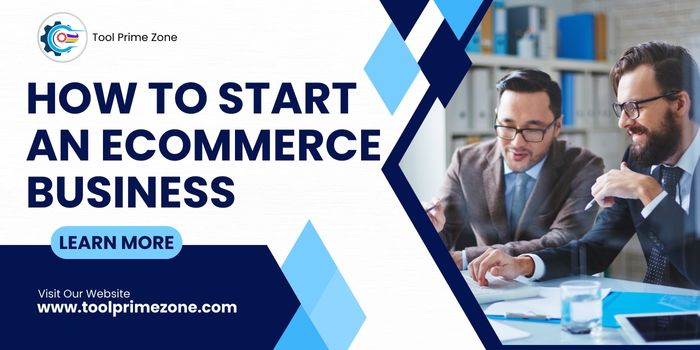Start an ecommerce business and tap into the thriving world of online retail. Ecommerce allows you to sell products to customers anywhere, without the need for a physical store. The global ecommerce industry is booming, with sales expected to exceed $5 trillion by 2024. This growth presents a huge opportunity for aspiring business owners to launch their ecommerce ventures.
In this guide, you’ll learn everything you need to know to start an ecommerce business. Whether you plan to create your products, resell items, or try your hand at dropshipping, we’ll break down each step to help you get started on the right foot.
Global ecommerce sales are expected to surpass $5 trillion in 2024. 42% of online shoppers say they are more likely to buy from brands they are familiar with.
Why Should You Start an Ecommerce Business?
Ecommerce offers significant advantages compared to traditional retail. The internet allows you to reach a global market. You don’t have to worry about expensive rent or overhead costs that come with running a physical store. More importantly, setting up an online business is cost-effective and easy, especially with various ecommerce platforms that handle most of the technical work for you.
Starting an ecommerce business also allows you to have a flexible work schedule. Whether you’re looking to run a full-time business or a side hustle, ecommerce can fit into your lifestyle. You can operate your business from anywhere with a computer and internet connection.

Choose the Right Ecommerce Business Model
Choosing the right business model is the first step in starting an ecommerce business. There are several types of ecommerce models that you can choose from:
-
Business to Consumer (B2C) – In this model, you sell products directly to consumers. This is the most common ecommerce model, with stores like Amazon, eBay, and Walmart using it.
-
Business to Business (B2B) – Here, businesses sell to other businesses. Examples include wholesale suppliers or manufacturers who provide products in bulk to retailers.
-
Consumer-to-Consumer (C2C) – In a C2C model, consumers sell directly to other consumers. Websites like eBay and Craigslist are examples of this type of model.
-
Dropshipping – With dropshipping, you don’t hold any inventory. When someone makes a purchase, the supplier ships the product directly to the customer. This business model is ideal for beginners, as it requires minimal upfront investment.
Each business model has its benefits and challenges. Your choice will depend on factors such as your budget, time availability, and the type of products you wish to sell.
Identify Your Niche
Your niche is the specific area of the market that you will focus on. Instead of trying to sell everything to everyone, you’ll target a smaller, more specific group of customers. Finding a profitable niche helps your ecommerce business stand out from the competition.
To choose your niche, ask yourself the following questions:
- What are you truly passionate about?
- Which problems can you solve for your target audience?
- Are there products in high demand with limited competition?
For example, instead of selling generic clothing, you could focus on eco-friendly fashion or plus-size clothing. The more specific your niche, the easier it will be to market your business and attract loyal customers.
Source Products for Your Store
Once you’ve identified your niche, you need to find products to sell. There are different ways to source products for your ecommerce business:
-
Create your products – If you’re creative or skilled in a specific area, you can design and manufacture your products. For example, jewelry makers, artists, or craftspeople can sell handmade items.
-
Wholesale suppliers – Many businesses offer products in bulk at discounted prices for resellers. You can purchase products in large quantities and sell them at a retail price.
-
Dropshipping – If you want to avoid holding inventory, consider partnering with suppliers who ship products directly to your customers. This business model requires little upfront investment, but it also means less control over product quality and shipping times.
Each option has its advantages and challenges. If you decide to create your products, you’ll have more control over quality and branding. On the other hand, dropshipping is easier to start, but you rely on third-party suppliers.

Set Up Your Ecommerce Website
Your website is your online storefront. It’s where customers will browse, make purchases, and learn about your business. Setting up a website doesn’t have to be difficult. There are plenty of user-friendly ecommerce platforms like Shopify, WooCommerce, and BigCommerce that allow you to build your site without any coding knowledge.
Here’s what you need to do:
-
Choose an ecommerce platform – Shopify is a great option for beginners because it offers easy-to-use tools and great customer support. WooCommerce is a good choice if you already have a WordPress website.
-
Pick a domain name – Your domain name should be short, memorable, and relevant to your business. Try to choose something easy to spell and pronounce.
-
Design your website – Choose a clean, simple design that’s easy to navigate. Make sure your site is mobile-friendly, as many shoppers use their phones to make purchases.
-
Set up payment methods – To process payments, you’ll need a secure payment gateway. Most ecommerce platforms support payment options like PayPal, credit cards, and other methods.
-
Add product pages – Your product pages should include clear, high-quality images and detailed descriptions. The more information you provide, the easier it will be for customers to make purchasing decisions.
Market Your Ecommerce Business
Once your website is live, the next step is to attract customers. Without proper marketing, even the best ecommerce businesses can struggle to gain traction. Here are some effective ways to promote your ecommerce business:
1. Social Media Marketing
Social media is a powerful tool for reaching potential customers. Platforms like Instagram, Facebook, and TikTok are excellent for showcasing your products and engaging with your audience. Create posts that highlight your products, share customer reviews, and connect with your followers.
2. Search Engine Optimization (SEO)
Search engine optimization (SEO) helps you rank higher on Google and other search engines. By using the right keywords in your product descriptions, blog posts, and website copy, you can improve your chances of showing up in search results.
Focus on using keywords related to your niche and products. For example, if you sell eco-friendly products, use terms like “sustainable products” or “eco-friendly fashion” to improve your visibility.
3. Paid Ads
Google Ads and social media ads can help you reach a broader audience. Start small with a budget that works for you, and monitor your campaigns to see what’s working best. Ads are a great way to generate instant traffic, but be sure to track your ROI (return on investment) to determine if your ads are profitable.
4. Email Marketing
Email marketing is an effective way to stay in touch with your customers. Build an email list by offering a discount or freebie in exchange for email sign-ups. Then, send out regular newsletters with promotions, new product launches, and helpful content.
Optimize for Growth
After your business starts gaining traction, it’s time to focus on growth. There are several ways to optimize your ecommerce business:
-
Analyze your data – Use analytics tools like Google Analytics to track your website’s performance. Identify which products are selling well, where your traffic is coming from, and where you can make improvements.
-
Offer excellent customer service – Respond to customer inquiries quickly, offer fast shipping, and resolve issues in a timely manner. Good customer service will help build trust and encourage repeat business.
-
Expand your product line – As your business grows, consider adding more products to your store. This can help you attract more customers and increase sales.
FAQs About Starting an Ecommerce Business
1. How much does it cost to start an ecommerce business?
Starting an ecommerce business can cost anywhere from $500 to $5,000, depending on the business model and products you choose. Dropshipping is generally the least expensive option to start with.
2. How long does it take to start an ecommerce business?
It can take anywhere from a few weeks to a few months to launch your ecommerce business, depending on how quickly you set up your website and source products.
3. Do I need experience to start an ecommerce business?
No, you don’t need experience. Many platforms, such as Shopify and WooCommerce, offer user-friendly tools for beginners.
4. How do I market my ecommerce business?
Use a mix of social media, SEO, paid ads, and email marketing to promote your business. Track the results to see what works best for your target audience.
5. How do I make my ecommerce business stand out?
Focus on a specific niche, offer excellent customer service, and create a memorable brand. High-quality images, detailed product descriptions, and a user-friendly website will also help you stand out.
Starting an ecommerce business is an exciting opportunity that can provide financial freedom and flexibility. By selecting the right business model, identifying your niche, and employing effective marketing strategies, you can establish a successful online store. Keep analyzing your data and optimizing your business for growth. With patience and hard work, your ecommerce business can thrive.

